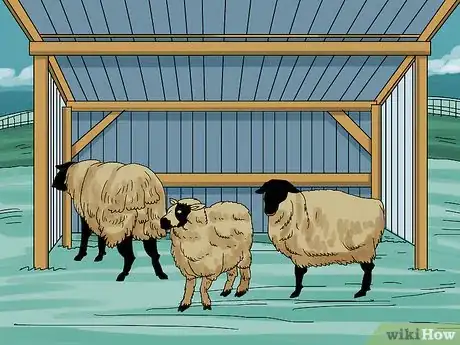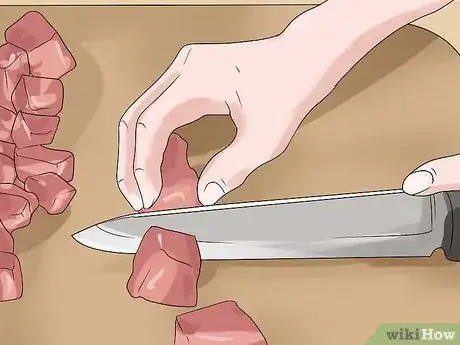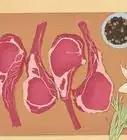This article was co-authored by wikiHow staff writer, Luke Smith, MFA. Luke Smith is a wikiHow Staff Writer. He's worked for literary agents, publishing houses, and with many authors, and his writing has been featured in a number of literary magazines. Now, Luke writes for the content team at wikiHow and hopes to help readers expand both their skillsets and the bounds of their curiosity. Luke earned his MFA from the University of Montana.
There are 8 references cited in this article, which can be found at the bottom of the page.
Learn more...
Lamb and mutton both come from sheep, but make no mistake, there’s a world of difference between them. But what is that difference, exactly? It all comes down to age, and this one single factor influences everything from the flavor to the color of the meat. Don’t be caught scratching your head the next time you’re leaning over the butcher counter—we’re here to explain what sets lamb and mutton apart, as well as how to cook them and their common cuts.
Things You Should Know
- Lamb is the meat of a sheep slaughtered before it’s 1 year old, while mutton is the meat of a sheep slaughtered at any age older than 1 year.
- Lamb meat tends to be more tender and lighter in color, with a milder flavor. Mutton is tougher, darker, more gamey, and stronger in flavor.
- Prepare mutton using a slower cooking method that better tenderizes the meat, like roasting or slow cooking. Prepare lamb by roasting, braising, or grilling it.
- The most common cuts of sheep are the shoulder, rack, loin, leg, shanks, and neck.
Steps
References
- ↑ https://www.mashed.com/275002/heres-the-difference-between-mutton-and-lamb/
- ↑ https://www.npr.org/sections/thesalt/2019/11/26/781652195/after-wwii-mutton-fell-out-of-favor-in-the-u-s-can-it-make-a-comeback
- ↑ https://www.mashed.com/275002/heres-the-difference-between-mutton-and-lamb/
- ↑ https://www.mashed.com/275002/heres-the-difference-between-mutton-and-lamb/
- ↑ https://www.americastestkitchen.com/cooksillustrated/articles/1630-why-lamb-tastes-like-lamb
- ↑ https://www.upr.org/arts-and-culture/2020-01-20/why-does-lamb-taste-so-weird
- ↑ https://www.americastestkitchen.com/cooksillustrated/articles/1630-why-lamb-tastes-like-lamb
- ↑ https://www.mashed.com/275002/heres-the-difference-between-mutton-and-lamb/
- ↑ https://www.fsis.usda.gov/food-safety/safe-food-handling-and-preparation/food-safety-basics/color-meat-and-poultry
- ↑ https://www.mashed.com/275002/heres-the-difference-between-mutton-and-lamb/
- ↑ https://www.linkedin.com/pulse/differences-between-mutton-lamb-goat-meat-pratik-maitra/
- ↑ https://www.americastestkitchen.com/cooksillustrated/articles/1630-why-lamb-tastes-like-lamb
- ↑ https://www.saveur.com/article/Techniques/A-Guide-to-Lamb-Cuts/
- ↑ https://www.fsis.usda.gov/food-safety/safe-food-handling-and-preparation/meat/lamb-farm-table
- ↑ https://www.saveur.com/article/Techniques/A-Guide-to-Lamb-Cuts/
- ↑ https://www.saveur.com/article/Techniques/A-Guide-to-Lamb-Cuts/
- ↑ https://www.saveur.com/article/Techniques/A-Guide-to-Lamb-Cuts/
- ↑ https://www.saveur.com/article/Techniques/A-Guide-to-Lamb-Cuts/













































